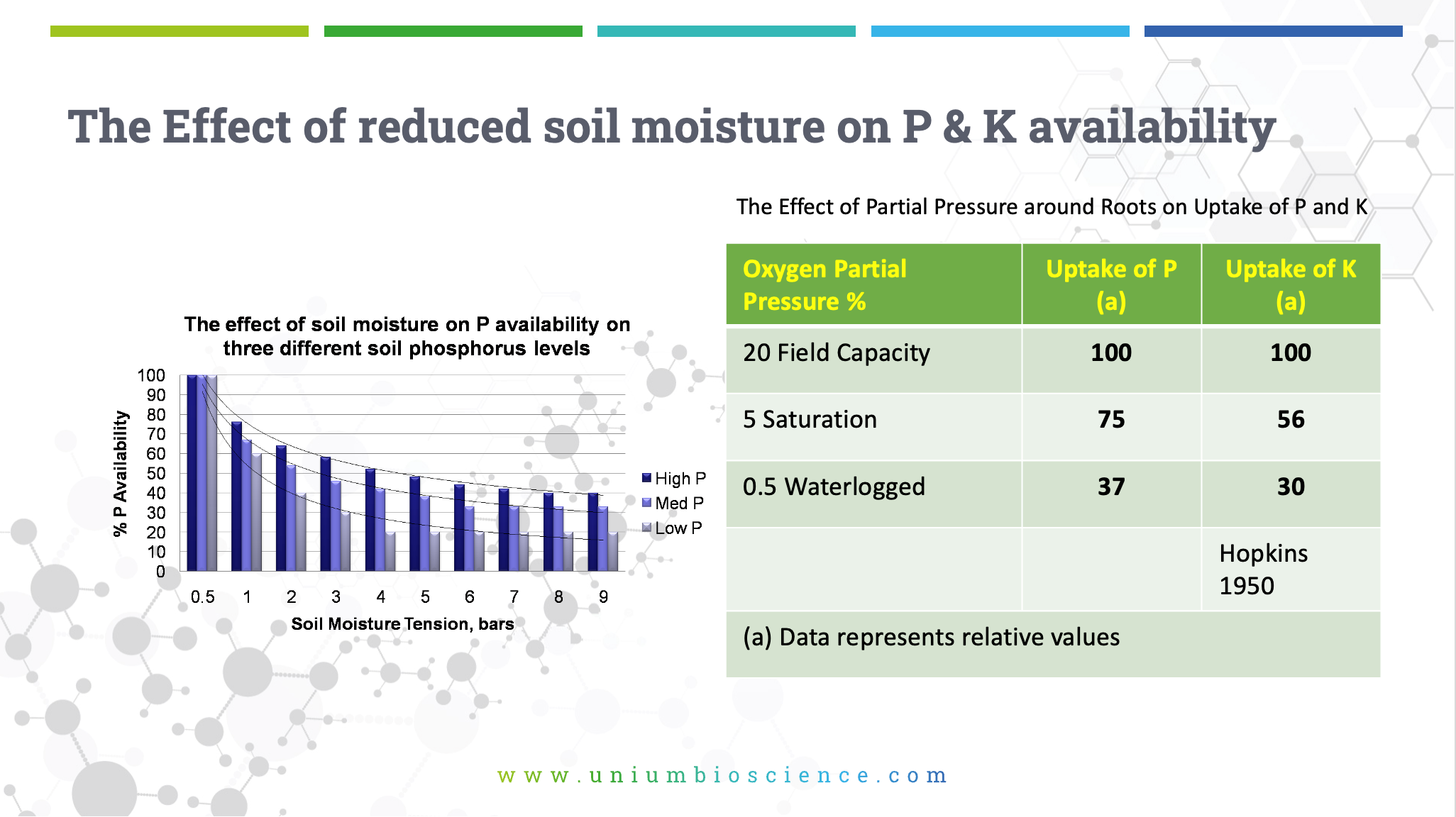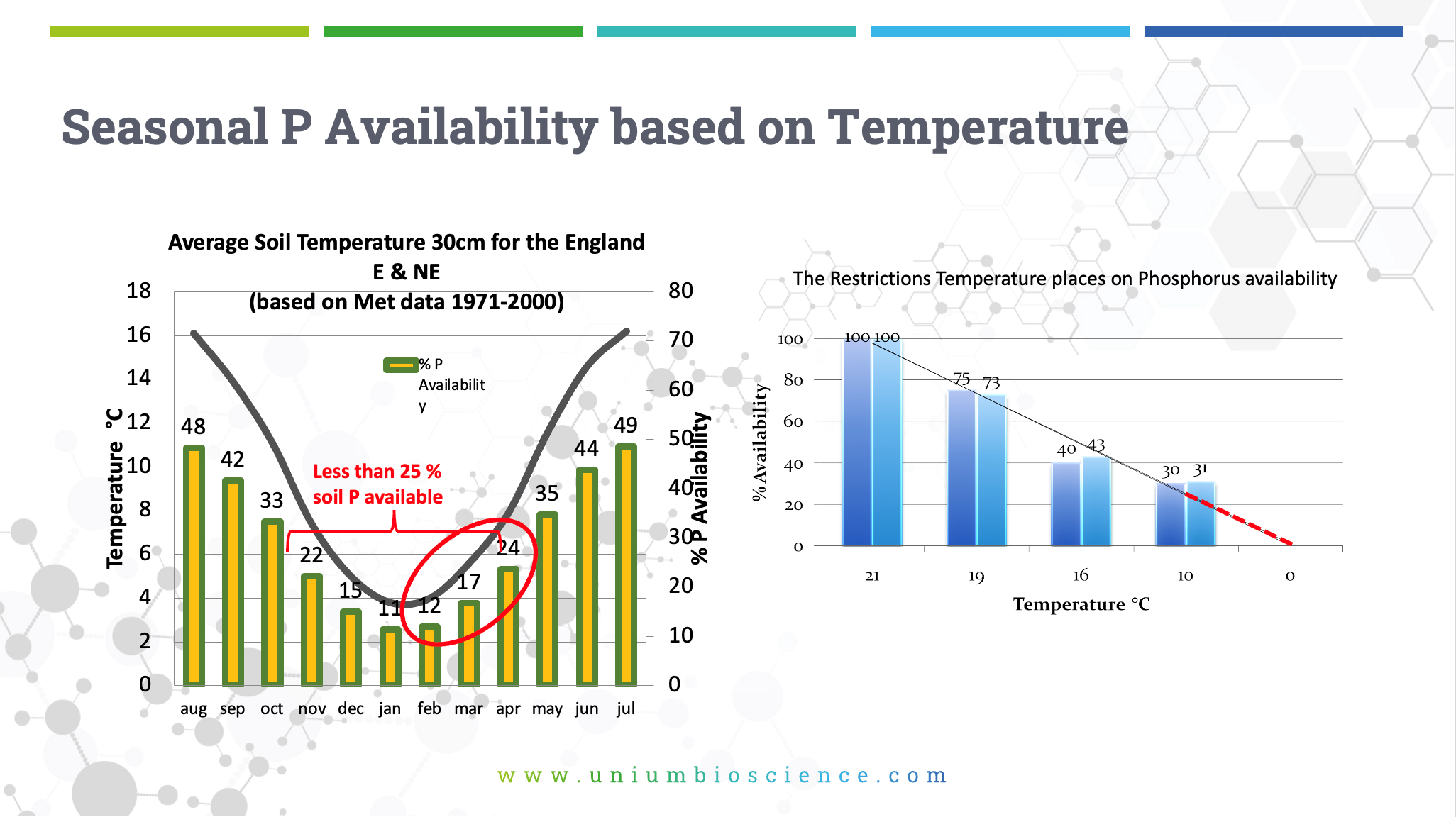Introducing Phos Power – our new phosphorus soil assessment tool
Environmental conditions play a significant role in determining the availability of phosphorus (P) to plants.
As an essential macronutrient, phosphorus is crucial for energy transfer, root development, and flowering. However, phosphorus often exists in forms that are not readily accessible to plants, and environmental factors such as soil pH, temperature, moisture, and microbial activity directly influence how much phosphorus plants can absorb.
Soil pH
Soil pH is one of the most critical environmental factors affecting phosphorus availability. In acidic soils (with pH levels below 5.5), phosphorus tends to bind with aluminum and iron, forming insoluble compounds that plants cannot absorb. In contrast, in alkaline soils (with pH levels above 7.5), phosphorus forms insoluble compounds with calcium. The optimal soil pH for phosphorus availability typically lies between 6.0 and 7.0, where phosphorus remains in its most accessible form—orthophosphate.
Farmers often adjust soil pH by applying lime to raise pH or sulfur to lower it, improving phosphorus availability. Without proper pH management, even soils with high phosphorus content can lead to deficiencies, as phosphorus remains locked in forms unavailable to plant roots.
Soil Moisture
Soil moisture also has a significant impact on phosphorus availability. In waterlogged or overly saturated soils, oxygen levels decrease, leading to anaerobic conditions that can slow down the release of phosphorus from organic matter. In such environments, phosphorus may also bind with iron, further reducing its availability.
Conversely, in dry soils, the lack of moisture inhibits the movement of phosphorus toward plant roots. Phosphorus is relatively immobile in soil, unlike nitrogen, which can move more freely with water. As a result, drought conditions can lead to phosphorus deficiencies because plants struggle to absorb the nutrient without sufficient water to facilitate its uptake.
Maintaining balanced soil moisture through irrigation and proper drainage helps ensure that phosphorus remains accessible to plants. Cover crops and organic matter can also improve water retention in the soil, indirectly promoting better phosphorus availability.

Temperature
Temperature influences both the chemical reactions in the soil and the biological processes that control phosphorus cycling. At lower temperatures, the microbial activity responsible for breaking down organic matter slows down, reducing the release of phosphorus into the soil. This is especially problematic in colder climates where spring planting begins before the soil warms sufficiently to support microbial decomposition.
In higher temperatures, microbial activity increases, releasing more phosphorus into the soil. However, extremely high temperatures can cause soil to dry out, limiting phosphorus movement toward roots. In regions with fluctuating temperatures, such as temperate climates, phosphorus availability can vary seasonally.

Microbial Activity
Soil microorganisms, particularly mycorrhizal fungi, play a key role in phosphorus availability. Mycorrhizal fungi form symbiotic relationships with plant roots, extending their ability to access phosphorus in soil particles. This is particularly important in soils with low phosphorus levels, as the fungi help extract phosphorus from insoluble compounds.
Environmental factors like soil pH, temperature, and moisture all influence microbial populations and activity. In harsh conditions—whether too hot, cold, dry, or wet—microbial activity decreases, limiting phosphorus availability. Managing the soil environment to support healthy microbial populations through the addition of organic matter and minimal tillage practices can enhance phosphorus uptake by plants.
Erosion and Soil Compaction
Physical conditions such as soil erosion and compaction also impact phosphorus availability. Erosion can strip away the topsoil, where most phosphorus is stored, leading to deficiencies. Compacted soils, on the other hand, reduce root growth and limit the movement of phosphorus toward plant roots. Reducing tillage and implementing erosion control measures, such as planting cover crops and maintaining ground cover, can mitigate these effects.
Conclusion
Phosphorus availability to plants is highly influenced by environmental conditions, including soil pH, moisture, temperature, microbial activity, and physical soil structure. Understanding and managing these factors is key to ensuring that plants have access to adequate phosphorus for healthy growth. By adjusting soil pH, maintaining optimal moisture levels, supporting microbial activity, and preventing erosion, farmers and gardeners can improve phosphorus availability, enhancing crop yields and promoting sustainable soil health.
Phosphate Power is a new and FREE online decision-making tool developed by Unium Bioscience to optimise phosphorus use efficiency in crop production.
This model is based on an algorithm linking soil moisture, temperature and location to a forecast for the next 7 days to help you make an informed decision on how best to supply your crop phosphorus at a very critical/sensitive time in the plants physiology.
Seed treatments are a sensible choice when you are planting outside optimal conditions to boost establishment and root growth – planting from October to April.
Depending upon your soil P levels will help dictate whether you need to mine reserves ~ the only way to do this is to push out more roots, more active roots in terms of pushing out more exudates to feed soil biology or by supplying an efficient supply of phosphorus by choosing the right form for your soil pH – organic or inorganic, placement relative to root structure or by using efficient foliars which will give uptake.
All these options sound simple and easy, but with a pleather of products and options to choose from it is easy to be confused. With an efficiency of 80-90% we can see that we are not currently getting it right and overusing or importantly over spending when it comes to phosphorus and yet still not getting the benefits we need.
At Unium we are constantly working to build more efficient programmes for the progressive farmer and grower who wants to challenge the status quo but based on facts and trials evidence.
This model is our next step to help you make informed decisions, question practices or recommendations and to stimulate debate as to how we can do it better. We hope you like it and enjoy the extra information it provides.


